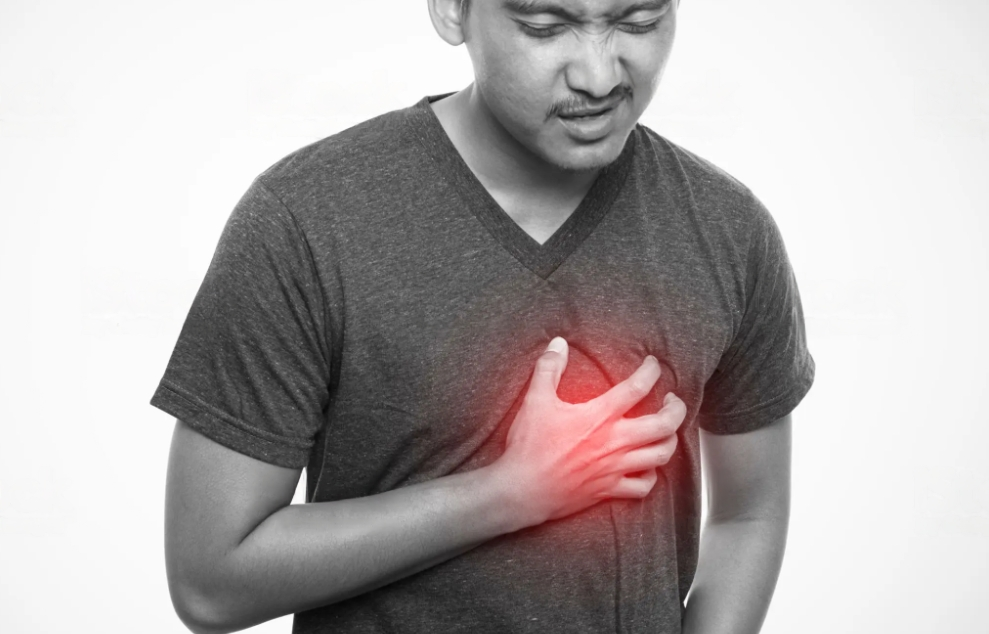Panic Attack vs. Heart Attack: Recognizing the Differences and Understanding the Symptoms
Panic Attack vs. Heart Attack: Recognizing the Differences and Understanding the Symptoms
Panic attack vs. Heart attack
Panic attacks and heart attacks are two distinct medical conditions that can cause similar symptoms, leading to confusion and anxiety for those experiencing them. Therefore, understanding the differences between panic attacks and heart attacks is crucial for accurate identification and appropriate response.
Panic attacks are intense episodes of fear and anxiety that various factors can trigger, such as stress, phobias, or underlying anxiety disorders. The following symptoms of a panic attack can be overwhelming and mimic those of a heart attack, including chest pain, racing heartbeat, shortness of breath, and a sense of impending doom. However, panic attack symptoms are typically short-lived, lasting only a few minutes, whereas heart attack symptoms may persist longer.
On the other hand, heart attacks are caused by a blockage in the coronary arteries, restricting blood flow to the heart muscle. This blockage can result in severe chest pain or discomfort, shortness of breath, pain radiating down the arm, and other symptoms.
Unlike panic attacks, heart attacks are medical emergencies requiring immediate medical care. Therefore, if you suspect you or someone else is experiencing a heart attack, it is vital to call emergency services without delay.
Importance of recognizing the differences
Recognizing the differences between panic attacks and heart attacks is important for several reasons. Firstly, it helps individuals accurately identify and distinguish between the two conditions.
Understanding that panic attacks are usually short-lived and not life-threatening can reduce anxiety and prevent unnecessary medical interventions. On the other hand, recognizing the symptoms of a heart attack and seeking immediate medical help can potentially save a person’s life.
Paying attention to the context and accompanying symptoms is crucial in differentiating between panic attacks and heart attacks. Panic attacks often occur in high-stress or anxious situations, while heart attacks can happen at any time and may be accompanied by additional symptoms such as nausea, dizziness, and sweating.
Understanding Panic Attack vs. Heart Attack Symptoms
Physical symptoms of panic attacks
Physical symptoms of panic attacks can be distressing and mimic those of other medical conditions, such as heart attacks.
Common panic attack symptoms include
- chest pain
- rapid heart rate
- shortness of breath
- sweating
- trembling
- a sense of impending doom
It is important to note that while panic attacks can cause severe physical discomfort, they are not life-threatening. However, frequent panic attacks may indicate panic disorder, an anxiety disorder characterized by recurrent and unexpected panic attacks. In addition, people with panic disorder may experience symptoms beyond the physical, such as constant worry about future attacks and avoidance of certain situations or places.
If you are experiencing physical symptoms of panic attacks, it is crucial to seek professional help. A mental health professional can provide an accurate diagnosis, help manage anxiety, and develop coping strategies tailored to your needs.
Physical symptoms of heart attacks
Physical symptoms of a heart attack can be concerning and require immediate attention. One of the most common signs is chest discomfort, pain, and pressure or tightness in the chest, usually on the left side. This pain can also spread to the arms, neck, jaw, and shoulder blades. It’s important to know that chest pain can vary among individuals, and some may have mild discomfort or no chest pain during a heart attack.
Shortness of breath is another noticeable symptom of a heart attack. As the heart struggles to pump blood effectively, it can cause fluid to build up in the lungs, resulting in difficulty breathing. A sensation of heaviness or tightness in the chest may accompany this symptom.
Other physical symptoms include unusual tiredness and a fast heartbeat. Fatigue can occur even with minimal exertion and may persist. The heart works harder to compensate for reduced blood flow, leading to an elevated heart rate and palpitations. These symptoms, along with difficulty breathing and chest pain, should never be ignored. If you or someone you know experiences these signs, it is crucial to seek immediate emergency medical care.
Differences between panic attack symptoms and heart attack symptoms
It is crucial to understand and tell the difference between panic attacks and heart attack symptoms to identify and respond to these distinct medical events accurately. While both panic attacks and heart attacks can cause intense physical sensations, there are key factors that can help distinguish between the two.
Panic attacks are sudden bursts of intense fear and anxiety, often accompanied by physical signs like a fast heartbeat, difficulty breathing, and chest pain. These symptoms can be distressing, but panic attacks are not life-threatening. They are usually short and can be triggered by stress or anxiety.
On the other hand, a heart attack happens when there is a blockage in the blood flow to the heart, causing damage to the heart muscle. Symptoms of a heart attack include severe and prolonged chest pain or discomfort, often described as pressure or tightness on the left side of the chest. Shortness of breath, pain spreading to the arms or jaw, and dizziness may also occur. Heart attacks require immediate medical attention as they can be life-threatening.
Both a panic attack and a heart attack can share some similar symptoms, like chest pain. It is important to pay attention to the context and duration of the symptoms. Repeated panic attacks tend to occur in situations of heightened stress or anxiety, while heart attacks are often associated with physical exertion or underlying heart disease.
Psychological symptoms of panic attacks
Psychological symptoms of panic attacks can be troubling and intense for those who go through them. It’s important to comprehend these symptoms to identify and handle panic attacks effectively.
During a panic attack, individuals may feel extreme fear and intense anxiety. This fear might come with a sense of impending disaster, a loss of control, or concerns about losing one’s mind. Psychological symptoms of panic attacks differ among individuals, but they typically involve a powerful emotional reaction that can disrupt daily activities.
Panic attacks happen when the body’s stress response system is triggered, causing stress hormones to flood the body. This physiological response can intensify the psychological symptoms, making the fear even more overwhelming. It’s important to note that panic attacks can occur in both men and women, but research suggests that women tend to be more prone to experiencing them.
It’s important to recognize the psychological symptoms of panic attacks to differentiate them from other conditions and get the right help. If you or someone you know often experiences panic attack symptoms, seeking evaluation and guidance from a mental health professional is crucial.
Risk Factors for Panic Attack vs. Heart Attack
Panic attacks and heart attacks have similar symptoms, but they are different conditions. Panic attacks are related to anxiety, while heart attacks occur due to blocked arteries.
During a panic attack, individuals feel intense fear, chest pain, fast heart rate, and difficulty breathing. These symptoms are triggered by stress hormones and usually do not cause long-term heart damage. On the other hand, a heart attack happens when an artery is blocked, reducing blood flow to the heart. It causes chest pain, and pain in the left side or upper abdomen, and can be life-threatening.
It’s crucial to distinguish between panic attacks and heart attacks to take appropriate action. When experiencing chest pain, consider the context: physical activity, heart disease history, or heart attack risk factors. If the symptoms are severe, persistent, or accompanied by shortness of breath, it’s a medical emergency. Immediate medical attention is necessary.
Lifestyle factors that increase the risk for heart attacks
Several lifestyle factors can increase the risk of heart attacks, highlighting the need for individuals to be mindful of their choices and make proactive changes to protect their heart health. Sedentary behaviour, unhealthy eating habits, smoking, excessive alcohol consumption, and chronic stress are key factors contributing to this risk.
Leading a sedentary lifestyle:
Being inactive and sitting for long periods increases the chance of a heart attack. Regular exercise and more movement to daily routines reduce this risk.
Unhealthy eating habits:
Unhealthy eating with saturated fats, cholesterol, and sodium leads to obesity, high blood pressure, and diabetes, raising heart attack risk. Instead, choose a balanced diet with fruits, veggies, whole grains, and lean proteins to maintain heart health.
Smoking:
It is a major risk factor for heart attacks, as it damages blood vessels, reduces oxygen supply, and promotes the formation of blood clots. Quitting smoking is crucial in reducing the risk of heart attacks and improving overall cardiovascular health.
Excessive alcohol consumption:
It can raise blood pressure, contribute to obesity, and increase the likelihood of heart attacks. Limiting alcohol intake to moderate levels or avoiding it altogether is recommended.
Chronic stress:
Has been linked to an increased risk of heart attacks. Developing healthy coping mechanisms, such as practicing relaxation techniques, engaging in regular exercise, and seeking support, can help manage stress levels and reduce this risk.
By addressing these lifestyle factors and making positive changes, individuals can take significant steps to reduce their risk of heart attacks and promote a healthier heart. It is important to prioritize regular physical activity, maintain a nutritious diet, avoid smoking and excessive alcohol consumption, and effectively manage stress to safeguard cardiovascular health.
The role of stress in triggering panic attacks
Stress plays a significant role in triggering panic attacks. When individuals experience high levels of stress, their body’s natural response is to release stress hormones, such as adrenaline, into the bloodstream. These stress hormones trigger the body’s fight-or-flight response, leading to physical and psychological symptoms associated with panic attacks.
Stress’s role in triggering panic attacks is essential for effective management. Stress-reducing activities like exercise, meditation, and relaxation techniques can help regulate stress hormones and reduce the frequency and intensity of panic attacks. Seeking support from mental health professionals can also provide valuable strategies for managing stress and anxiety, enabling individuals to regain control over their lives and minimize the impact of panic attacks.
How to React in a Panic Attack vs. Heart Attack Situation
Suppose you are experiencing intense fear or sudden onset of overwhelming anxiety accompanied by physical symptoms such as a rapid heart rate, shortness of breath, and chest pain that feels sharp and fleeting. In that case, it may indicate a panic attack. Panic attacks tend to peak within minutes and gradually subside. While the symptoms can be distressing, panic attacks are not life-threatening.
On the other hand, a heart attack is a medical emergency that requires immediate attention. If you experience symptoms such as chest pain or persistent discomfort, crushing, or radiating to the arms, back, or jaw, along with other signs such as shortness of breath, dizziness, and unusual fatigue, it could indicate a heart attack. If you suspect you are having a heart attack, it is crucial to seek emergency care by calling your local emergency number or going to the nearest emergency room.
Diagnostic Procedures and Treatment
Tests used to diagnose heart attacks
When a heart attack is suspected, healthcare professionals employ various tests to confirm the diagnosis and determine the appropriate treatment. One commonly used test is an electrocardiogram (ECG or EKG), which measures the heart’s electrical activity. It can help identify heart rhythm abnormalities or detect signs of a heart attack. Blood tests are also conducted to measure cardiac enzymes or proteins that are released into the bloodstream when the heart muscle is damaged.

Treatment options for heart attacks
Prompt medical intervention is vital in treating heart attacks. Depending on the severity, treatment may involve medications to relieve pain, dissolve blood clots, and reduce the workload on the heart. Procedures such as angioplasty and stenting or coronary artery bypass surgery may be necessary to restore blood flow to the heart. Cardiac rehabilitation programs can help patients recover and manage their heart health through exercise, education, and lifestyle changes.
Therapy options for panic attacks
For individuals experiencing panic attacks, therapy can be a beneficial approach to managing symptoms and improving overall well-being. Cognitive-behavioural therapy (CBT) is a common therapy option that focuses on identifying and challenging negative thought patterns and behaviours associated with a panic attack. It helps individuals develop coping strategies, such as relaxation techniques and controlled breathing exercises, to reduce anxiety and prevent future panic attacks. Other therapeutic approaches, such as exposure or mindfulness-based therapies, may also be utilized depending on individual needs and preferences.
Prevention Measures
Lifestyle changes to prevent heart attacks
Making positive changes to your lifestyle can significantly reduce the risk of heart attacks. One important step is adopting a heart-healthy diet, which includes consuming more fruits, vegetables, whole grains, and lean proteins while limiting saturated fats, trans fats, and sodium. Regular physical activity is crucial, aiming for at least 150 minutes of moderate-intensity exercise per week. Quitting smoking and avoiding excessive alcohol consumption is also vital in preventing heart attacks. Managing stress through relaxation techniques, such as meditation or yoga, can further contribute to heart health. Additional measures to consider include regular check-ups with healthcare professionals and maintaining a healthy weight.
Preventing future panic attacks
While it may not be possible to prevent panic attacks entirely, there are strategies to manage and reduce their frequency. Seeking professional help, such as therapy or counselling, can provide valuable tools and coping mechanisms for dealing with anxiety and panic symptoms. Learning stress management techniques, including deep breathing exercises, progressive muscle relaxation, and mindfulness, can help regulate emotions and minimize the occurrence of panic attacks. Taking care of physical health through regular exercise, adequate sleep, and a balanced diet can also contribute to overall well-being and potentially reduce the risk of panic attacks. Identifying triggers and developing personalized strategies to manage them effectively is important.
Conclusion
In conclusion, it is important to recognize the differences between panic attacks and heart attacks for accurate identification and proper response. While both conditions can have similar symptoms, understanding their unique characteristics helps individuals make informed decisions. Panic attacks are intense episodes of fear and anxiety triggered by various factors, while heart attacks occur due to blocked arteries that restrict blood flow to the heart. Panic attacks are short-lived and not life-threatening, whereas heart attacks require immediate medical attention. Additionally, adopting a heart-healthy lifestyle and seeking professional assistance for anxiety management can help prevent and effectively handle panic attacks and heart attacks.
FAQs
1. What is your heart rate during a panic attack?
During a panic attack, your heart rate can significantly increase
2. Can you have a heart attack from a panic attack?
While a panic attack can feel similar to a heart attack, it does not directly cause a heart attack.
3. Difference between anxiety attack and heart attack?
The main difference between an anxiety attack and a heart attack lies in their underlying causes: anxiety attacks result from intense feelings of fear or worry, while heart attacks occur due to a blockage in the heart’s blood supply.
4. Can a panic attack damage your heart
While a panic attack can be distressing, it typically does not cause any long-term damage to the heart.
5. How do I know if I have heart problems or anxiety?
If you are unsure whether your symptoms indicate heart problems or anxiety, it is important to consult with a healthcare professional for an accurate diagnosis and appropriate guidance.
References
Mayo Clinic. (2022, May 21). Heart attack – Symptoms and causes. Mayo Clinic; Mayo Clinic. https://www.mayoclinic.org/diseases-conditions/heart-attack/symptoms-causes/syc-20373106
Better Health Channel. (2012). Panic attack. Vic.gov.au. https://www.betterhealth.vic.gov.au/health/conditionsandtreatments/panic-attack
Heart Attack – Diagnosis | NHLBI, NIH. (2022, March 24). Www.nhlbi.nih.gov. https://www.nhlbi.nih.gov/health/heart-attack/diagnosis#:~:text=An%20electrocardiogram%20(EKG)%20is%20the
Brown, S. (2002, March 18). What Are the Treatments for Panic Attacks? WebMD; WebMD. https://www.webmd.com/anxiety-panic/guide/understanding-panic-attack-treatment
Difference Between Panic and Heart Attacks. (2021, April 2). Cleveland Clinic. https://health.clevelandclinic.org/the-difference-between-panic-attacks-and-heart-attacks/#:~:text=Panic%20attack%20symptoms%20last%20a
panic attack or heart attack quiz heart attack or anxiety woman how to slow your heart rate during a panic attack panic attack vs heart attack reddit how to stop worrying about heart attack





